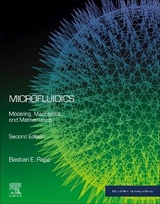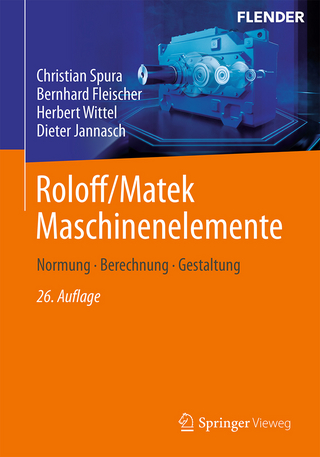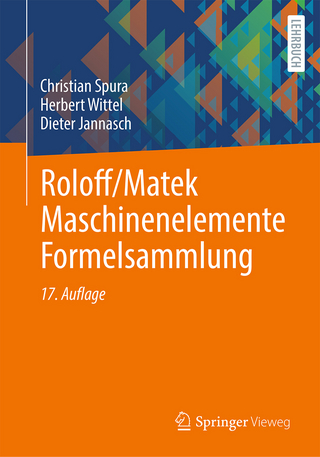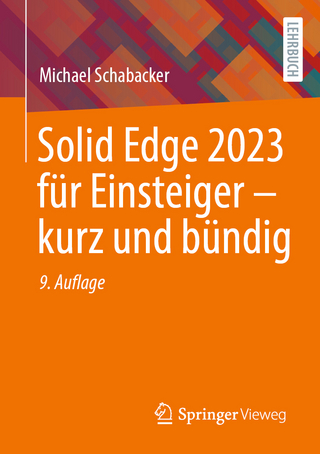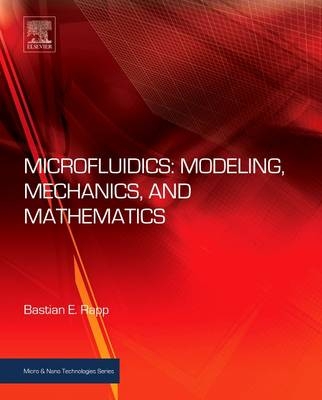
Microfluidics: Modeling, Mechanics and Mathematics
William Andrew Publishing (Verlag)
978-1-4557-3141-1 (ISBN)
- Titel erscheint in neuer Auflage
- Artikel merken
Dr Rapp fully engages with the multidisciplinary nature of the subject. Alongside traditional fluid/transport topics, there is a wealth of coverage of materials and manufacturing techniques, chemical modification/surface functionalization, biochemical analysis, and the biosensors involved.
As well as providing a clear and concise overview to get started into the multidisciplinary field of microfluidics and practical guidance on techniques, pitfalls and troubleshooting, this book supplies:
A set of hands-on experiments and protocols that will help setting up lab experiments but which will also allow a quick start into practical work.
A collection of microfluidic structures, with 3D-CAD and image data that can be used directly (files provided on a companion website).
Prof. Dr.-Ing. Bastian E. Rapp is a full professor of process technology at the Department of Microsystems Engineering (IMTEK) and the head of the NeptunLab, University of Freiburg, Germany. For his work, he was awarded, among others, the Edison Prize of the General Electric (GE) Foundation, the GMM award, and the Südwestmetall-Förderpreis. In 2019, he received an ERC Consolidator Grant from the European Research Council for his work on tactile displays for the visually impaired. His work has been published in the most important international journals, including Advanced Materials, Angewandte Chemie, Nature, and Science, and has been featured in national and international radio and print media, including the BBC, The New York Times, and the Discovery Channel. In 2021, he was nominated by the German Minister of Research and Education, Anja Karliczek, for the German Future Award of the German President for Technology and Innovation. In 2022, he was nominated for the German Future Award of the German President for Technology and Innovation with his spin-off company Glassomer for the development of a new generation of techniques for high-resolution structuring of glass. His research focuses on the development of novel materials, processes, and applications in microsystem engineering, life sciences, and biotechnology, as well as instrumental and clinical analytics.
Part I Fundamentals 1. Introduction2. Introduction to Maple3. Engineering Mathematics4. Series5. Transforms6. Thermodynamics7. Vector Calculus8. Differential Equations
Part II Bulk Fluid Flows9. Fluids10. Conservation of Mass: The Continuity Equation11. Conservation of Momentum: The Navier-Stokes Equation12. Conservation of Energy: The Energy Equation and the Thermodynamic Equation of State13. Continuity and Navier-Stokes Equations in Different Coordinate Systems14. The Circular Flow Tube15. Analytical Solutions to the Navier-Stokes Equation16. Analytical Solutions to Poiseuille Flow Problems in Different Geometries17. Hydraulic Resistance18. Analytical Solutions to Transient Flow Problems19. Taylor-Aris Dispersion
Part III Fluid Surface Effects20. Surface Tension21. Capillarity22. Measuring Surface Tension and Free Surface Energy23. Plateau-Rayleigh Instability24. The Shape of Drops
Part IV Numerics25. Numerical Methods for Linear Systems of Equations26. Numerical Solutions to Nonlinear Systems: Newton’s Method27. Numerical Methods for Solving Differential Equations28. Numerical Solutions to the Navier-Stokes Equation29. Computational Fluid Dynamics30. Finite Difference Method31. Finite Volume Method32. Finite Element Method33. Numerical Solutions to Transient Flow Problems34. Numerical Solutions to Three-Dimensional Flow Problems
| Erscheinungsdatum | 13.12.2016 |
|---|---|
| Reihe/Serie | Micro & Nano Technologies |
| Verlagsort | Norwich |
| Sprache | englisch |
| Maße | 216 x 276 mm |
| Gewicht | 2470 g |
| Themenwelt | Technik ► Maschinenbau |
| ISBN-10 | 1-4557-3141-2 / 1455731412 |
| ISBN-13 | 978-1-4557-3141-1 / 9781455731411 |
| Zustand | Neuware |
| Informationen gemäß Produktsicherheitsverordnung (GPSR) | |
| Haben Sie eine Frage zum Produkt? |
aus dem Bereich
